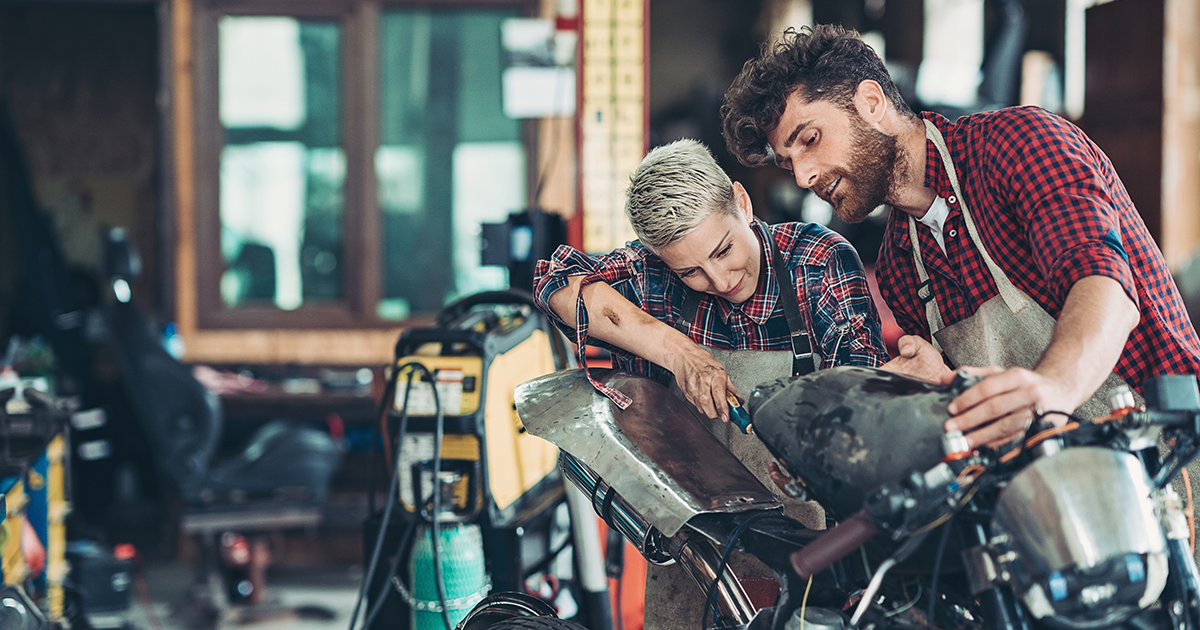
A Guide on How to Rent a House or Apartment
If you rent or are thinking of renting, you’re in good company. But renting can cost you a lot of money. Renters typically pay more than 30% of their income on rent.1 So it will benefit you to research and make a wise decision about rental housing.
Let’s get up to speed on what to look for regarding payments, neighborhoods, and building structure so you can make that potential apartment, condo or house your new home!!
Know your budget
Before you start looking for your new home, you should know what you’ll be responsible for and what you can afford. Keep in mind your rent shouldn’t exceed 30% of your gross income (full income before taxes). Take a look at these possibilities and budget accordingly:
- Moving expenses like professional movers, moving trucks, or friends and family helpers
- Rent and utilities
- Fees and deposits
- Parking
- Commute time and gas costs
- Renter’s insurance
If you can’t afford rent payments
Look for info and assistance at Consumer.gov and HUD.gov.
Fees and deposits
You’ll need to fill out an application for your prospective rental which starts a series of money exits. Even before the monthly expenses, you’ll have upfront costs.
Upfront payments and fees
Between application fees, a security deposit, and more, you’re going to shell out some money before you even get the keys to your home. Make sure to ask the property manager about ALL FEES associated with applying and living in the rental.
- Application fee – pays for the screening of the applicant. Expect a credit and background check. There might be a processing fee as well.
- Security deposit (average from one-three months’ rent amount) – this is a payment that will be used to pay any damages and responsibilities over your monthly rent payment and is usually used after you move out but must be paid upfront. If the landlord doesn’t find reason to keep the deposit, it’s refundable (read your contract for specifics before paying or signing).
- Pet fee / Pet rent – the fee you pay the landlord to have a pet live with you. It may or may not be refundable. Also, check for any breed restrictions as these can violate your lease if you own a pet which is restricted by the property and still continue to house the pet.
- Pet deposit – this fee is to cover any damage your pet might cause for the duration of the lease. If there’s no damage, generally it’s refundable. But you’ll want to confirm with that with management and ensure it is in the contract.
- First and last month’s rent (monthly rent amount x’s two) – payment of your first month’s rent and your last month’s rent is often needed before you move in.
- Late payments likely have a penalty. Try your best to avoid these. Not only will late payments cost you extra money, but it may also cost your reputation as a renter and may hurt your credit.
- Rental insurance – this may be an option for you and can come in handy if you have situations arise that will not be covered by your rent or your paycheck. Shop around and see if there are affordable options for you to protect not only yourself but your possessions as well.
Bills, and more bills
Rent isn’t your only financial obligation while maintaining a residence. Monthly bills, like utilities, are usually extra. The list will vary based on your needs, where you live, and what the property may include in rent. Depending on the time of year and the average cost of each of these, you could be looking at a few hundred dollars per month in addition to your rent. Some of the most common expenses are:
- Electricity
- Gas
- Internet and/or cable
- Water and sewer
- Trash services
- Landscaping fees
Location, location, location
When you’re considering where you want to rent, location is key. Chances are you’ll want to be reasonably close to work, friends, restaurants, shopping and possibly schools. The shorter commute could save you money on gas and save you time, too! So, you can narrow down locations by the importance of those items.
Neighborhood safety
Everyone wants to live in a place they feel secure. It’s worth it to check out the history of your area and the property you are looking to rent.
- Safety first – check your local police website or free website sites like SpotCrime.com for crime info. The Citizen App is also a potential resource to check out.
- Security systems – are there security measures like gated parking and buzz-in entry to the building?
- Basic locks – make sure the door and window locks work. Double check there’s a dead bolt lock on your front door.
- Balcony or ground level – secure any sliding doors or windows with a wooden dowel so they can’t be easily opened from the outside.
Neighborhood atmosphere
There’s more to a rental property location than the proximity to your friends. Consider what’s around the property. Check out HowLoud.com noise report or RentLingo.com for a noise heat map.
- Noise – are there train tracks or disruptive construction nearby?
- Local business – what about businesses or bars with super early or late hours?
- Loud company – do the neighbors seem to be disorderly or mega loud?
- Think parking – Is there a garage, dedicated parking spot, guests parking or street parking?
Take Time to Explore Options
Keep your eyes and ears open to what the apartment or house offers. Think about what your expectations are for your home.
Structure and condition
When you take the tour of your potential place, take note of the condition. If things look sub-par, that could mean the landlord isn’t too concerned about upkeep. Even if the landlord is on the up-and-up, old or inefficient homes can cause utility bills to be much higher than average. A home with drafty windows, running toilets and inadequate HVAC units could cost you more than just rent. Here are some items to pay attention to.
- Listen – if the walls are paper thin, if you can hear the neighbors talking, or if traffic is super noticeable these things could be bothersome over time.
- Upkeep – is the place falling down or begging for repairs? Ask for repairs. If they aren’t corrected and you end up renting it, those problems could become your problems.
- Bugs – do you see a few ants, a cockroach, or mice? If you can help it, don’t rent a place where you’re already outnumbered by pests or rodents.
- Hazards – if mold or dangerous conditions are prevalent, the apartment or house isn’t going to be for you. You have the right to a safe environment, so don’t give a shady landlord the opportunity to make a buck off of you. Move on to the next place.
Sweet amenities
Think about which amenities are important to you. You may like the basics just fine (I do!).
- Central air and heating – it depends where you live if these two things are necessities or luxuries to you. A window air conditioner or room heater could be sufficient.
- In-house washer and dryer – having a washer and dryer in my apartment complex was such a big deal when I rented. If you have them in your actual apartment, BONUS! If there’s a hook-up in your apartment but no washer or dryer, check if the landlord provides the machines.
- Green space – a yard or just a nice patch of green can be cool. But double check if you’re responsible for mowing or maintenance.
- Rent paying options – find out if your landlord offers online payments or ACH transfer options. It could possibly save you time and money (like no late rent fees).
Find your home!
How to rent an apartment or house can be scary, stressful, and fun! Keep your head clear, budget for payments and fees, keep your eyes peeled for safety, and think about what you want out of your rental. Soon, you’ll be throwing that house-warming party and hopefully getting some new towels and neat candles!
While moves are something you can plan for, sometimes the associated expenses can me expensive. If you’re faced with a move that isn’t flexible and find yourself without the funds necessary, you may need to borrow the money. Speedy Cash offers Installment Loans and a Line of Credit option that could be helpful. Explore loan options and learn more about loans from Speedy Cash to help you decide if these loans are right for you and your situation. Applying is easy and is available online, at your local Speedy Cash store, or over the phone[JP1] . Happy moving!
[JP1]click to call
Sources:
- Joint Center for Housing Studies of Harvard University. (2020). America’s Rental Housing 2020. Retrieved from: https://www.jchs.harvard.edu/sites/default/files/Harvard_JCHS_Americas_Rental_Housing_2020.pdf
- Statista Research Department. (2021, March 25). Average monthly apartment rent in the United States from January 2017 to February 2021, by apartment size. Retrieved from: https://www.statista.com/statistics/1063502/average-monthly-apartment-rent-usa/



